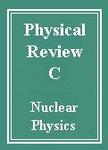版权所有:内蒙古大学图书馆 技术提供:维普资讯• 智图
内蒙古自治区呼和浩特市赛罕区大学西街235号 邮编: 010021

作者机构:MTA Atomki P.O. Box 51 H-4001 Debrecen Hungary CNRS UMR 7178 F-67037 Strasbourg France Research Center for Nuclear Physics (RCNP) Osaka University Ibaraki 567-0047 Japan Department of Physics Osaka City University Osaka 558-8585 Japan Advanced Science Research Center Japan Atomic Energy Agency Tokai Ibaraki 319-1195 Japan RIKEN Nishina Center 2-1 Hirosawa Wako Saitama 351-0198 Japan Institut für Kernphysik Technische Universität Darmstadt 64289 Darmstadt Germany IRFU CEA Université Paris-Saclay F-91191 Gif-sur-Yvette France Center for Nuclear Study University of Tokyo RIKEN Campus Wako Saitama 351-0198 Japan Department of Physics University of Tokyo 7-3-1 Hongo Bunkyo Tokyo 113-0033 Japan Department of Physics Rikkyo University 3-34-1 Nishi-Ikebukuro Toshima Tokyo 172-8501 Japan School of Computing Engineering and Mathematics University of Brighton Brighton BN2 4GJ United Kingdom Institute for Nuclear Science & Technology VINATOM P.O. Box 5T-160 Nghia Do Hanoi Vietnam Institut de Physique Nucléaire IN2P3-CNRS Université Paris-Sud Université Paris-Saclay 91406 Orsay Cedex France Department of Physics University of Oslo N-0316 Oslo Norway Department of Physics The University of Hong Kong Pokfulam Hong Kong Université de Strasbourg IPHC 23 rue du Loess F-67037 Strasbourg France CSNSM CNRS/IN2P3 Université Paris-Saclay F-91405 Orsay Campus France Department of Physics University of Surrey Guildford GU2 7XH United Kingdom Department of Physics Tohoku University Sendai 980-8578 Japan State Key Laboratory of Nuclear Physics and Technology Peking University Beijing 100871 People's Republic of China
出 版 物:《Physical Review C》 (物理学评论C辑:核物理学)
年 卷 期:2019年第99卷第1期
页 面:014312-014312页
核心收录:
学科分类:07[理学] 070202[理学-粒子物理与原子核物理] 0702[理学-物理学]
基 金:Ministry of Science and Technology, Taiwan, MOST European Commission, EC European Research Council, ERC Seventh Framework Programme, FP7, (258567) Seventh Framework Programme, FP7 Japan Society for the Promotion of Science, JSPS, (L-13520, 16K05352) Japan Society for the Promotion of Science, JSPS RIKEN, (268718, NKFIH-NN114454) RIKEN Bundesministerium für Bildung und Forschung, BMBF, (GINOP-2.3.3-15-2016-00034, JP16K05352, 05P15RDFN1, 05P12RDFN8) Bundesministerium für Bildung und Forschung, BMBF
主 题:Electromagnetic transitions Energy levels & level densities Nuclear spin & parity Nuclear structure & decays Shell model Spectroscopic factors & electromagnetic moments 59 ≤ A ≤ 89
摘 要:The nuclear structure of the Ni76 nucleus was investigated by (p,2p) reaction using a NaI(Tl) array to detect the deexciting prompt γ rays. A new transition with an energy of 2227 keV was identified by γγ and γγγ coincidences. According to these coincidence spectra the observed transition connects a new state at 4147 keV and the previously known 41+ state at 1920 keV. Two weaker transitions were also obtained at 2441 and 2838 keV, which could be tentatively placed to feed the known 21+ state at 990 keV. Our shell-model calculations using the Lenzi, Nowacki, Poves, and Sieja interaction produced good candidates for the experimental proton hole states in the observed energy region, and the theoretical cross sections showed good agreement with the experimental values. Although we could not assign all the experimental states to the theoretical ones unambiguously, the results are consistent with a reasonably large Z=28 shell gap for nickel isotopes in accordance with previous studies.